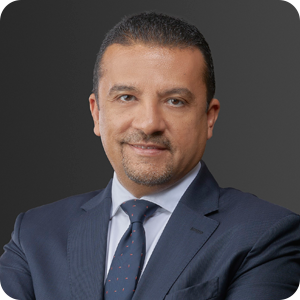Renewable energy, the light at the end of the tunnel of the climate change issue, is in danger of experiencing reputational damage. After Spain, Portugal, and parts of France were cast into darkness by massive blackouts in late April 2025, some commentators and political groups have initiated a heated debate over green energy, blaming renewables for the power outage. This theory has been refuted by the authorities, and the cause is under investigation. However, there is no doubt that the 12-hour blackout in Portugal and 22-hour blackout in Spain, combined with a high proportion of renewables being used for Iberian peninsula power generation (56% in Spain and 71% in Portugal) could shake public opinion and trust regarding energy transition and prompt investment cuts. Is this a valid concern? How can the risks associated with it be mitigated? Experts in the field shed some light on this.
Key Takeaways:
- On 28 April 20025, an unprecedented power outage paralyzed daily life in Portugal and Spain, and parts of France, causing panic, gridlock, and confusion across the Iberian peninsula.
- According to experts, the blackouts were not directly caused by renewables but by a sudden failure in grid components, which triggered a cascade of power plant trips.
- The main risks associated with integrating a high proportion of renewable energy into national power grids include the variability of wind and solar output, low inertia, and stability issues. However, these risks do not necessarily trigger blackouts.
- As a solution, energy experts propose decentralized, grid-forming systems to boost stability and enable secure, flexible operation during disturbances.
- Governments and energy providers must communicate transparently, clarifying that the blackout stemmed from specific grid management issues rather than from a failure of renewable energy itself.
- Only 3% of Spain’s installed electricity capacity is linked across borders, far below the EU’s 15% target.
- While the blackouts may briefly slow progress in some regions, particularly those already hesitant about the energy transition, it is unlikely to stop the global shift to renewables.
DevelopmentAid: Could the high share of renewable energy in Spain and Portugal have been a potential contributing factor to the recent blackouts?

“The blackouts in Spain and Portugal were not directly caused by renewables. However, the high share of inverter-based sources such as wind and solar PV, combined with limited interconnection and insufficient synthetic inertia (technological substitutes for physical inertia), likely contributed. It was the combination of these factors rather than renewables alone that led to the system’s failure. Countries like Denmark, the Netherlands, and Germany also have high shares of wind and solar power, but manage their grids without major blackouts. Spain, however, has limited connections to neighbouring countries. Only 3% of its installed electricity capacity is linked across borders, far below the EU’s 15% target. This makes it harder for Spain to draw support from other grids during disruptions, leading it to be more like an “energy island” (think about the Cuban blackouts). Traditional power plants (coal, gas, nuclear) have heavy spinning parts that help to stabilize the grid by maintaining frequency. In contrast, wind and solar use inverters, which don’t naturally support grid stability because they lack this rotating mass, or inertia. Battery energy storage systems provide rapid and precise frequency response, making them a key technology for grid stability. With proper control, they can quickly increase output or switch between charging and discharging in under a second.”

“The high share of renewable energy in Spain and Portugal’s energy mix may have contributed to the recent blackouts by exacerbating the impact of an initial grid disturbance. Solar power, which accounts for a significant portion of the generation, resulted in low grid inertia and added complexity to balancing the system. However, the blackouts were not directly caused by the renewables themselves but by a sudden failure in the transmission interconnector, likely the link with France, which triggered a cascade of power plant trips. The low inertia and limited interconnection capacity made the system more vulnerable to this initial fault, leading to a rapid and severe frequency drop that the grid’s protective systems could not manage effectively.”

“The share of renewables in Spain and Portugal’s grids doesn’t directly cause blackouts, but their intermittency highlights grid vulnerabilities. Proper integration and backup systems are key to mitigating risks.”
DevelopmentAid: How might the Iberian blackout affect public and political confidence in renewable energy systems?

“Blackouts, although disruptive, can spark more informed public debate and stronger political will to upgrade grid infrastructure. However, if poorly communicated or politicised, such events risk eroding public confidence in renewables. While consulting for an energy firm in Toronto, I quickly learned how critical grid stability is. Countries facing similar issues must learn this lesson without delay. Reports indicate that, as of April 2025, Spain had an installed grid-scale battery energy storage system of 60 MW, a figure significantly lower than the UK’s 5.6 GW and Italy’s 1 GW, despite similar projected storage needs for these three countries. Is the public aware of this? For many, blackouts are a visible sign of failure, which can feed the false belief that clean energy is unreliable. This plays into the hands of powerful fossil fuel and nuclear lobbies, which quickly use these moments to push their agendas and delay the energy transition. However, if the situation is explained clearly, it can raise awareness of the technical challenges behind grid integration and highlight the need for smarter investments such as grid modernization, better interconnections, and flexibility solutions.”

“The Iberian blackout initially sparked concerns and criticism about the reliability of renewable energy systems, particularly in Spain. Opposition politicians and some media outlets quickly blamed the high share of wind and solar power for the outage, suggesting that an over-reliance on these sources had left the grid vulnerable. However, government leaders and energy experts rebutted these claims, emphasizing that the blackout was due to specific grid management issues rather than an inherent flaw in renewable energy. The strong and transparent responses from both governments (Spain and Portugal) have helped to maintain overall public support for renewable energy, with the incident serving as a catalyst to improve grid resilience and reliability rather than being a setback.”

“Grid failures are normal; delayed recovery points to structural flaws. Increased renewable integration – paired with robust grid design – can enhance, not undermine, system resilience.”
DevelopmentAid: What are the main risks associated with integrating a high share of renewable energy into national power grids, and how can these risks be mitigated?

“Growing up in Ukraine in Soviet times, I used a noisy voltage stabilizer to watch TV because of unstable electricity. That experience gave me an early insight into voltage control and the importance of managing power quality, which are still relevant today. As we shift to more renewable energy, we face key technical risks such as low system inertia, unstable grid frequency, voltage control challenges, the variable nature of wind and solar, limited storage, and weak grid connections. If not addressed properly, these can threaten grid stability. To manage these risks, countries need to deploy technologies like synthetic inertia and grid-forming inverters that replicate the stabilizing effects of traditional power plants. Investing in storage solutions, such as batteries, helps to balance supply and demand. Strengthening regional grid connections allows countries to share power and reduce fluctuations. Demand-side flexibility and smart grids can adjust usage in real time, and advanced monitoring tools (including AI) can improve forecasting and response. These challenges are real, but they are manageable. Countries can build a stable, modern grid with the proper infrastructure, technologies, and policies. It requires forward thinking, coordinated planning, and timely investment. Unfortunately, inflated risk premiums still make clean energy projects less affordable in some countries.”

“The main risks associated with integrating a high share of renewable energy into national power grids include the variability of wind and solar output, low inertia and stability issues, insufficient energy storage or dispatchable backup, limited transmission capacity or interconnections, and challenges in black-start recovery. These risks can be mitigated through proper planning and technology. For instance, fast-balancing resources can manage the variability of renewables, while technologies like synchronous condensers and fast frequency response can help to stabilize the grid. Expanding energy storage and dispatchable backup ensures the grid can handle sudden drops in renewable generation. Strengthening transmission capacity and interconnections, such as those between Spain and France, can improve the grid’s ability to import and export power, reducing the risk of isolation. Finally, dedicated strategies for black-start recovery, including maintaining some conventional generation capacity as a safety net, can help to reboot the grid after a collapse. The ultimate and fastest solution is to increase the capacity of BESS in both grids and maximize BESS’s role in grid voltage and frequency stabilization.”

“High renewable shares require grids that can isolate faults. Decentralized, grid-forming systems can boost stability and enable secure, flexible operation during disturbances.”
DevelopmentAid: Could the Iberian blackouts slow down the global transition to renewable energy and, if so, what strategies should governments and energy organizations adopt to reassure the public and investors about the reliability of renewable energy systems?

“While the blackouts may briefly slow progress in some regions, especially those already hesitant about the energy transition, it is unlikely to stop the global shift to renewables. In fact, many countries are moving full speed ahead. China’s wind and solar capacity has surpassed thermal power for the first time in history, showing how fast the new energy sector is growing. The core reasons for adopting renewables remain strong: the urgency to address climate change, improving energy security, and the rapidly falling costs of clean technologies. Reports show that solar PV costs have dropped by about 87% over the past decade, making it cheaper than fossil fuels in many places. Onshore wind has seen similar cost advantages, and battery storage is now far more affordable and scalable, with costs falling by around 80%. However, public perception is important. If blackouts are blamed on renewables instead of poor system design, this could shake public and investor confidence. To avoid this, clear communication is key, along with showcasing successful examples like Denmark and Germany, investing in modern grid technologies, and involving stakeholders early. The blackouts should be seen as a wake-up call, not a failure of renewables, but a signal to accelerate smarter, more resilient grid integration.”

“The Iberian blackout will not slow down the global transition to renewable energy. Europe is not fully equipped to run electricity grids with high renewables penetration. The impact of high renewables penetration can be mitigated through several strategies. Governments and energy organizations should focus on transparent communication, emphasizing that the blackout was due to specific grid management issues rather than an inherent flaw in renewable energy. They should also highlight the ongoing efforts to improve grid resilience, such as upgrading infrastructure, increasing interconnection capacity, and investing in energy storage and grid-forming inverter technology. Additionally, maintaining some dispatchable capacity as a safety net and fostering international knowledge sharing and collaboration about grid stability would help to reassure the public and investors. By taking these steps, the incident can serve as a learning opportunity that ultimately strengthens the renewable energy transition.”

“The Iberian blackout shows we need smarter grids, not less renewables. Stronger coordination and resilient systems will boost public trust and accelerate the clean energy transition.”
The renewable energy sector has many perspectives for several reasons. One of these is the fact that the workforce is unlikely to be replaced by AI and other technological advances. Moreover, in the context of climate change and the need for energy security, there are more and more openings related to clean energy. On the DevelopmentAid job board, there are currently hundreds of job openings in the energy and environment sectors, and a plethora of opportunities related to open tenders and grants for individuals in this field. All these tools and many more options can be easily explored thanks to an Individual Professional Membership package, which can unlock many other opportunities for candidates advancing in their international development career.

